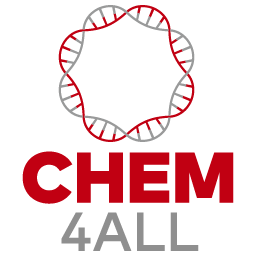
Groene Chemie

Groene Chemie
Industriele & Groene Chemie
Docent(en)
Nieck Benes (Industriele chemie – UT) en Peter Deuss (Groene chemie, RUG)
Inhoud Industriele Chemie
Het doel van deze cursus is om de deelnemers bekend te maken met de basisprincipes van de chemische procestechnologie. Gedurende de cursus zal een ontwerp worden gemaakt van (bestaand) industrieel chemisch proces, op basis van informatie die wordt aangereikt tijdens de colleges en de open literatuur. Hierbij wordt ingegaan op industriële chemische reactoren en scheidingstechnieken. Het industriële proces wordt vereenvoudigd om vervolgens met massa en energiebalansen hieraan te kunnen rekenen. Uiteindelijk zal er een technisch en economisch evaluatie van het ontwerp worden gedaan.
Na afloop van de cursus kan de student:
- globaal verschillende bestaande grote industriële chemische processen beschrijven, evenals mogelijke toekomstige (duurzame) alternatieven voor deze processen.
- balansen voor massa en energie opstellen over een geheel proces, en over de verschillende ‘unit operations’ binnen dat proces.
- globaal beschrijven welke chemische reactoren er in de chemische industrie worden gebruikt, en voor de basisreactoren een kwantitatieve beschrijving geven.
- de concepten evenwicht- en snelheid gebaseerde moleculaire scheiding uitleggen, en eenvoudige berekeningen hieraan uitvoeren.
- de socio-economische aspecten van chemische processen inschatten, onder andere met betrekking tot veiligheid en efficiëntie.
Inhoud Groene Chemie
This course is an introduction to Green Chemistry. Green chemistry (GCh) is defined as the design of chemical products and processes that reduce or eliminate the use and generation of hazardous substances. The 12 principles of Green Chemistry provide a set of guideline principles for design at the molecular level. During this course, the principles of Green Chemistry are explained, and case studies are provided. The main definitions in the field are explained and calculation of green matrices on case studies is presented. Furthermore, most important focus areas are alternative solvents, catalysis in biphasic systems and heterogeneous catalysis for the conversion of renewable resources. The course also aims to enable future generation of chemists to actively use knowledge of green chemistry when transitioning to positions in academia or industry. Therefore, during the course reading assignments are given and discussion about the most important topics encouraged. At the end of the course, the students are asked to prepare a power point presentations about a selected research paper, critically evaluate the environmental impact of the process presented and suggest possible improvements.
After the course, the student will be able to:
- Provide the definition of: Green Chemistry, Sustainability, Risk, Hazard, Exposure, Atom Economy, E-Factor, Toxiciy, Greenhouse gas, renewable resources
- Briefly summarize the 12 principles of Green Chemistry and explain to what end they have been created; Identify and explain the main drivers of sustainable development
- Calculate the E-factor and Atom economy for a given reaction, compare the environmental impact of reactions based on these metrics
- Describe the physical and chemical properties of alternative reaction media discussed during the course (scCO2, water,fluorocarbons); explain how these alternative solvents can be implemented for a given reaction or case study
- Describe the principles of “catalysis in biphasic systems” , identify the benefits of this concept related to green chemistry, and explain how this concept can be implemented for a given reaction
- Construct simple reaction schemes related to the conversion of renewable resources to useful chemicals
- Critically view (or evaluate) a given process (catalyst, solvent, starting materials, products) in terms of environmental impact and propose (design) appropriate improvements to make the process ‘greener’
Onderwijsmaterialen
- Chemical Technology: An Integral Textbook. Andreas Jess, Peter Wasserscheid. ISBN: 978-3-527-30446-2
- Lancaster Green Chemistry: An Introductory Text
- Collection of papers and powerpoint given ahead of or during the lectures.
Tentaminering
Twee deeltoetsen voor resp. Industriele chemie en Groene chemie. Het eindcijfer is gemiddelde van de twee deeltoetsen. Voor industriele chemie schrijven deelnemers een individueel verslag over het procesontwerp waaraan zij gedurende de cursus hebben gewerkt. De uiteindelijke tentaminering zal bestaan uit een mondeling tentamen over de behandelde theorie en het verslag. For Green Chemistry the student has to evaluate a (set of) papers in terms of green chemistry, and provide a 15 minutes power point presentation, answer question of peers and teacher. Several suitable papers are preselected.

